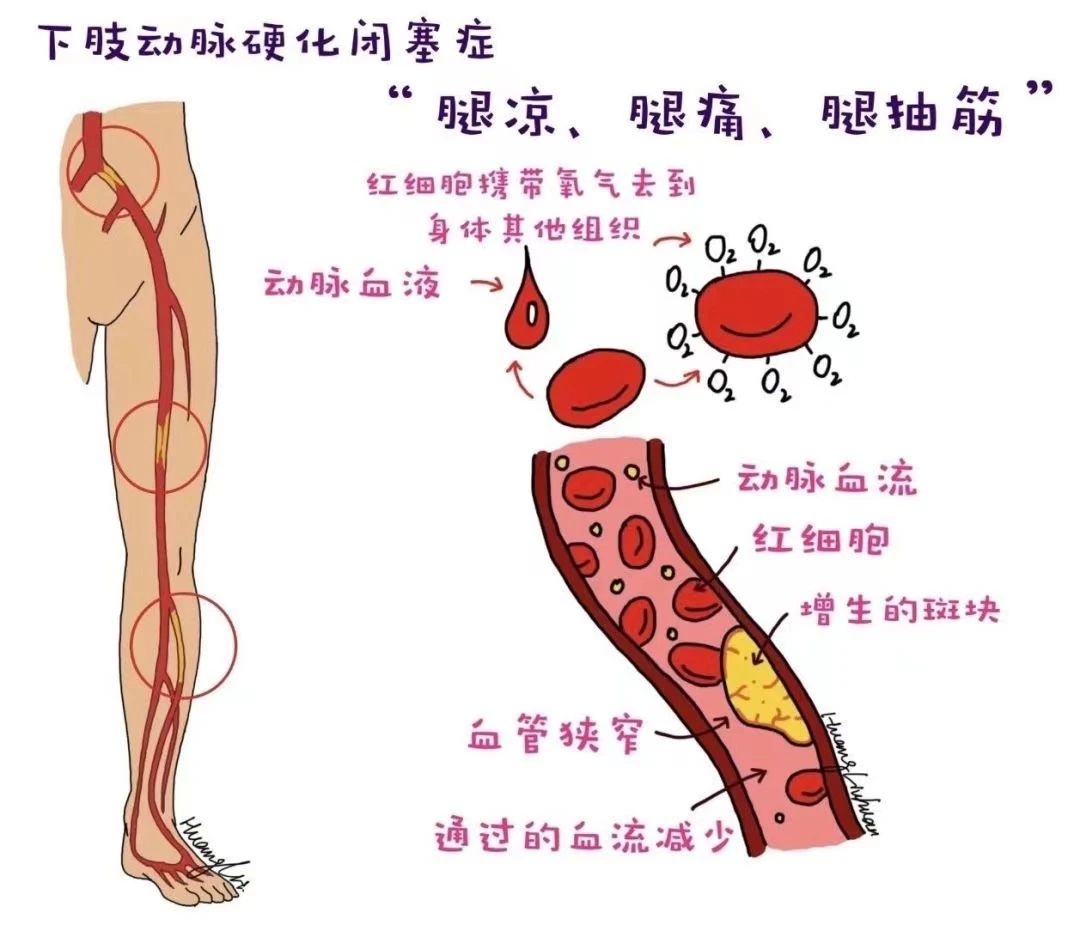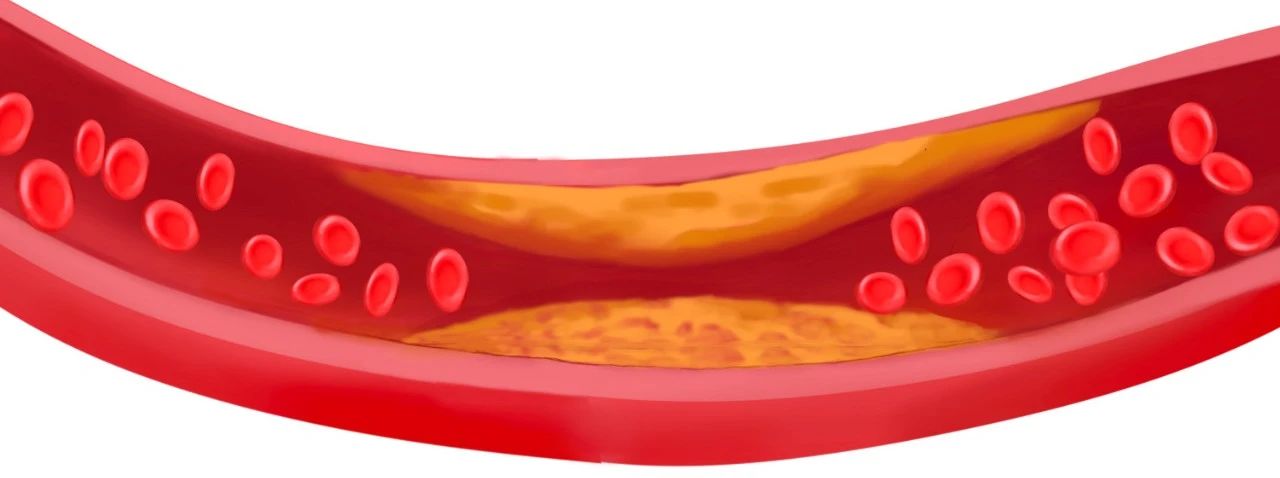- Date:2023-01-20
- Click:5895Times
As the weather gets cold, many middle-aged and elderly friends obviously feel cold feet, "calf belly" sore, and even some people exercise leg pain, walking limp, must find a place to rest to continue to walk. Many people think it is cold "old cold legs" attack, miss the best time for treatment, resulting in distal limb ischemia, necrosis, and even amputation. In fact, in winter, both lower limbs cold and weak, pain, numbness, may not be just cold so simple, there may be lower limb atherosclerosis occlusive disease.

What is atherosclerotic occlusive disease of the lower extremities?
Human blood vessels are like the pipes in our homes, carrying nutrients needed for life's activities to all parts of our bodies. Pipes produce scale and rust over time, and blood vessels also rust as we age. As a result of smoking, high blood pressure, and high blood cholesterol, lipids in the blood accumulate in the walls of the blood vessels to produce atherosclerotic plaque. As the plaque increases, the blood vessel lumen gradually narrowed or even occluded, the blood flow to the lower extremities will be reduced, and then the symptoms of lower extremity ischemia. "Walking and stopping" is precisely because of the lower extremity arterial stenosis, occlusion caused by muscle ischemia after exercise to produce the symptom.
What are the causes of lower extremity atherosclerotic occlusive disease?
What are the vulnerable groups?
The occurrence of atherosclerotic occlusive disease of the lower limbs has a strong relationship with lifestyle, such as smoking, not having a healthy enough diet and excessive salt intake. These unhealthy lifestyles can lead to diabetes, hypertension and hyperlipidemia. And hyperlipidemia, hypertension, smoking, diabetes, obesity and low HDL are all high-risk factors for atherosclerotic occlusive disease of the lower limbs.
Middle-aged and elderly men are more than women, people with high blood pressure, high blood lipids, high (blood) viscosity, high smoking addiction, people with coronary heart disease, episodes of heart attack, people with atrial fibrillation, people with atherosclerosis and abdominal aortic aneurysm, people with smoking, obesity, and lack of physical activity are the people with high incidence of atheroembolism.
What are the early signs of having atherosclerotic occlusive disease?
Atherosclerotic occlusive disease of the lower limbs in the early stages of the disease can be manifested as cold legs and feet, numbness, and sometimes after exercise, leg muscle spasms, also known as "cramps". As these symptoms lack specificity, many people mistake them for cold legs or lumbar spine problems, thus delaying their condition. We would like to remind middle-aged and elderly people with these symptoms that they should go to the vascular surgery department of the hospital for a relevant examination to determine whether they need treatment.
As the disease progresses, intermittent claudication will appear on the basis of coldness and numbness, that is, the walking and stopping that we mentioned at the beginning, during which the distance of claudication will be gradually shortened if it has not been consulted in time. From the beginning of being able to walk several hundred meters, it gradually reduces to 200 meters or even tens of meters. If the condition continues to deteriorate, "resting pain" will appear. In this case, pain in the legs or feet occurs even when you are not exercising, and is especially severe at night when you are sleeping, making it difficult for you to sleep or eat. It is important to treat the disease aggressively at this stage, otherwise the disease will progress further into the chronic limb-threatening ischemic stage. At this stage, even a small break in the foot is very unlikely to heal, and the lower limbs gradually become necrotic or even eventually lead to amputation, which can be life-threatening in severe cases.
How should I care for my lower extremity atherosclerotic occlusive disease at home?
Care of the affected limb:
① keep warm, prohibit hot compresses, prohibit cold compresses;
② take the appropriate position, sleep with the head high and feet low position, so that the blood is easy to perfusion to the lower limbs;
③ Avoid maintaining a position for a long time, so as not to affect blood circulation;
④ Avoid crossing the legs when sitting to prevent pressure on the arteries and veins from obstructing blood flow;
⑤ Keep feet clean and dry and wash feet with warm water to avoid burns;
⑥ When the skin is itchy, apply antipruritic ointment and avoid scratching to avoid secondary infection;
(vii) When the skin is itchy, apply anti-itching ointment and avoid hand scratching to avoid secondary infection;
Dietary care: Eat low-calorie, low-sugar, low-fat and low-cholesterol foods to prevent arteries and atherosclerosis, take more vitamins to maintain the elasticity of vascular smooth muscle; absolutely quit smoking.
How to prevent atherosclerotic occlusive disease of the lower extremities?
① Pay attention to keep warm. Blood vessels, especially coronary arteries, are prone to contraction and spasm in the winter cold, so pay close attention to warmth;
② patients should not exercise in the morning. Morning suddenly exercise, nerve excitability suddenly increased, very easy to induce arterial embolism, winter should pay attention to this problem;
③tonic should be moderate. In winter, people's movement was less, plus a lot of tonic hot food and tonic medicine and wine, it is easy to cause blood lipid increase, induced arterial embolism;
④ Keep a balanced mind. Emotional excitement is a big taboo for vascular disease, do not let the emotional ups and downs too much;
⑤ Exercise properly. Reduced exercise will also cause slow blood flow and elevated blood lipids, so it is necessary to reasonably arrange the exercise time and control the amount of exercise.




 鲁ICP备11009722号-4
鲁ICP备11009722号-4 